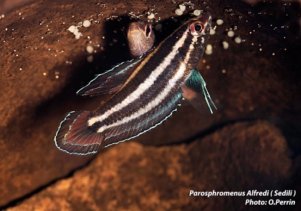INTRODUCTION
For each species we now start a continual documentation of the information which is gathered over time. This we have decided to do because it is becoming increasingly clear, that the development and changes in the natural habitats, and in the occurance of the species are happening rapidly. We find it important that we document as much information as possible in order to establish a relative clear picture of what is happening.
The resources of informations are many and varied, so information often becomes spread around on the internet and is not collected in one place. These informations can come from reports from the local areas, of local experts who observe changes happening, from private collectors and local enthusiasts who posts on facebook, or it can come from articles, scientific studies in the fields and many others. It is therefore not just one coherent report we attempt to make but rather a gathering of many sources of information, with the excact mention of dates and source of information. We will however, often not mention specific locations precisely, as we wish to protect these as much as possible.
We hope to contribute this way to the continual increase of understanding and knowledge of the extreme threathened situation of the parosphroemenus species.
PAROSPHROMENUS ALFREDI
THREATHS P. ALFREDI
Extremely high.
Large parts of the original range are no longer habitable for the species.
Even the former aquarium stocks are almost extinct so the remaining fish deserve renewed attention and breeding efforts.
2019
January 2019
In an article in the British Magazine ‘The Labyrinth’, — as well as in the german IGL ‘Der Makropode’ — professor Peter Beyer tells about the observation which he has done in the area of Sedili, on a recent trip to the area. This article points to the disturbing fact that in the original area of P. alfredi, Sedili, it seems that it has for some years now not been possible to find P. alfredi. On the other hand, the area seems to have been taken over by the other species of Parosphromenus P. nagyi. The reasons for this remains inexplicable. You can find a link to the article here.
WHAT HAS HAPPENED IN SEDILI — research on the situation of Parosphromenus alfredi by Peter Beyer
AAGB Labyrinth 191 december 2018 p. 10 – 15
February 2019
In a post on Facebook, Mohd Illam Norbakim Lokman, Malaysia, (Ichthyologist kampung style) dokuments as well, the same problem, about the apperant dissappearence of P. alfredi from its natural and original habitat.
With his permission we here show some photos of the situation he reported form the area. (See underneath)


